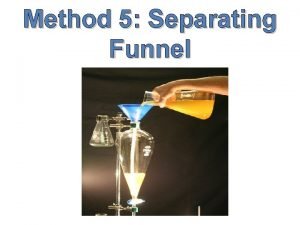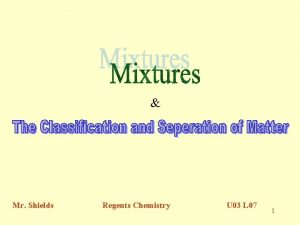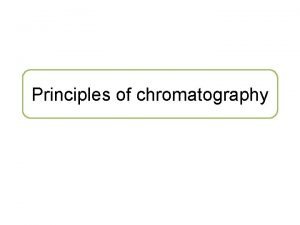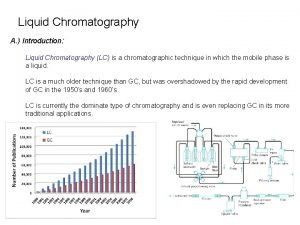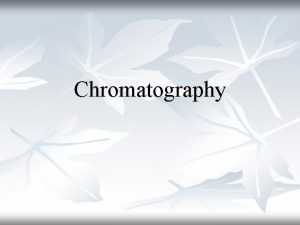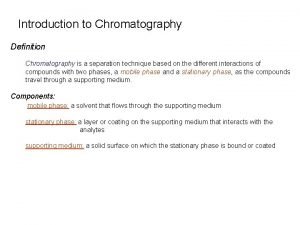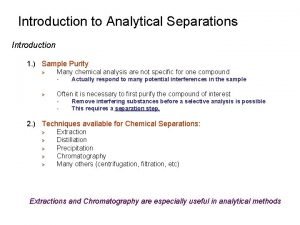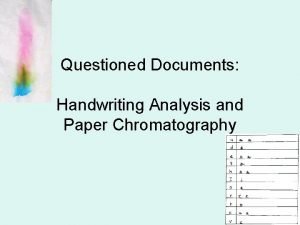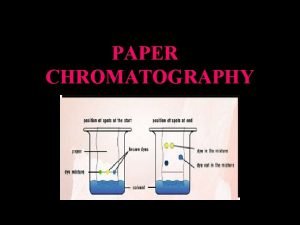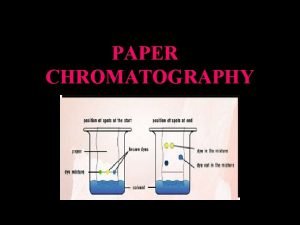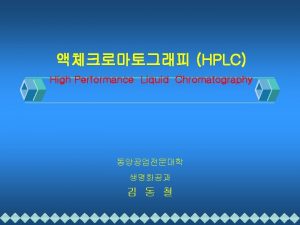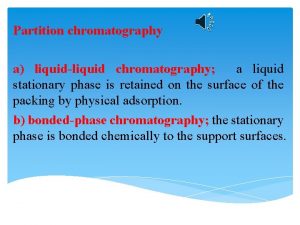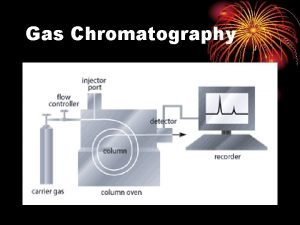Paper Chromatography A method of partition chromatography using











- Slides: 11


Paper Chromatography A method of partition chromatography using filter paper strips as carrier or inert support. The factor governing separation of mixtures of solutes on filter paper is the partition between two immiscible phases. One is usually water adsorbed on cellulose fibres in the paper (stationary phase). The second is the organic solvent flows past the sample on the paper (stationary phase).


Partition occurs between the mobile phase and the stationary aqueous phase bound by the cellulose. The isolation depends on partition coefficient of the solute. Where, K: Is the partition coeffcient. C (Stationary: Is the concentration of the solute in the stationary. C (Mobile): Is the concentration of the solute in the mobile.

General Procedure 1 - Choice of paper and solvent to be used. 2 - Desalting of sample. 3 - Application of the sample. 4 - Equilibration of paper. 5 - Development. 6 - Detection. 7 - Identification of substances.

Techniques of development with various flow directions Radial development Ascending development Descending development

Descending Chromatography

Multiple chromatography includes all procedures in which the development is repeated after one development is completed. A- multiple development: the chromatogram is repeatedly developed in the same direction and thus the complete resolution of two or more substances which have Rf values close together can be obtained. As the mobile phase one can use either the same solvent system or different solvent systems.

B- two-dimensional chromatography: When large numbers of substances are to be separated on a single chromatogram. Development in a direction perpendicular to the first, and with a solvent system different from that used initially is often necessary. The sample is applied on one corner of a square piece of paper and after development with the first solvent, the paper is dried , rotated 90 o and developed in the second direction. Usually, different types of solvents systems are used in each direction. It is essential that the first solvent be completely volatile.


 Separating funnel uses
Separating funnel uses Paper chromatography is a method used in regents
Paper chromatography is a method used in regents What is partition coefficient
What is partition coefficient Partition chromatography
Partition chromatography Difference between isocratic and gradient elution
Difference between isocratic and gradient elution Partition chromatography applications
Partition chromatography applications What is the definition of chromatography
What is the definition of chromatography Partition chromatography
Partition chromatography Is botana curus real
Is botana curus real Patsy handwriting sample
Patsy handwriting sample Rf value in paper chromatography
Rf value in paper chromatography Who invented paper chromatography
Who invented paper chromatography
